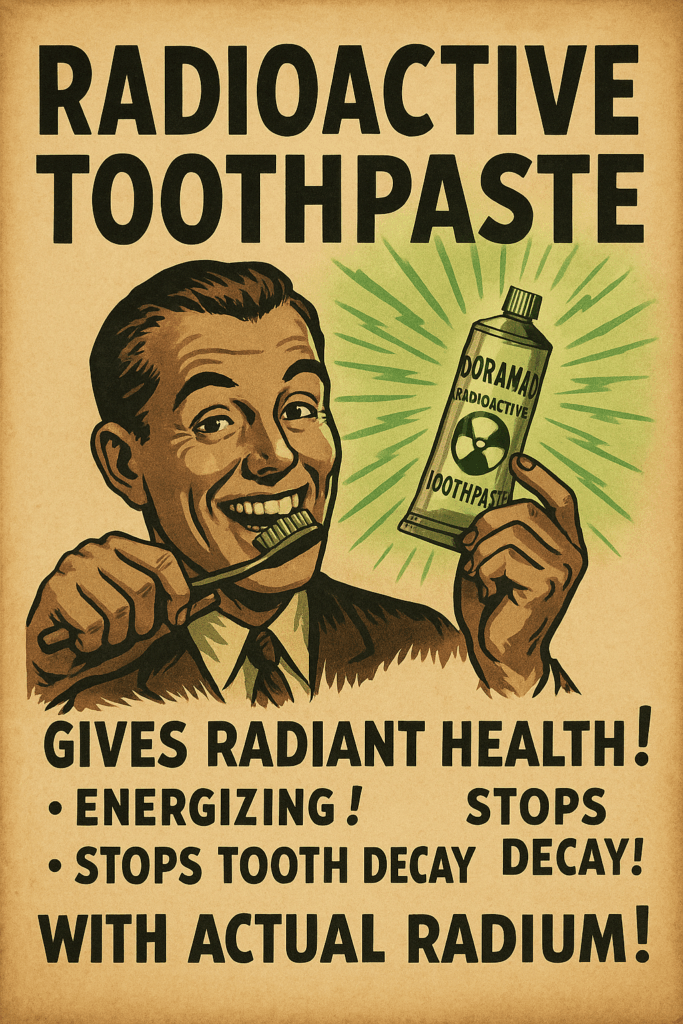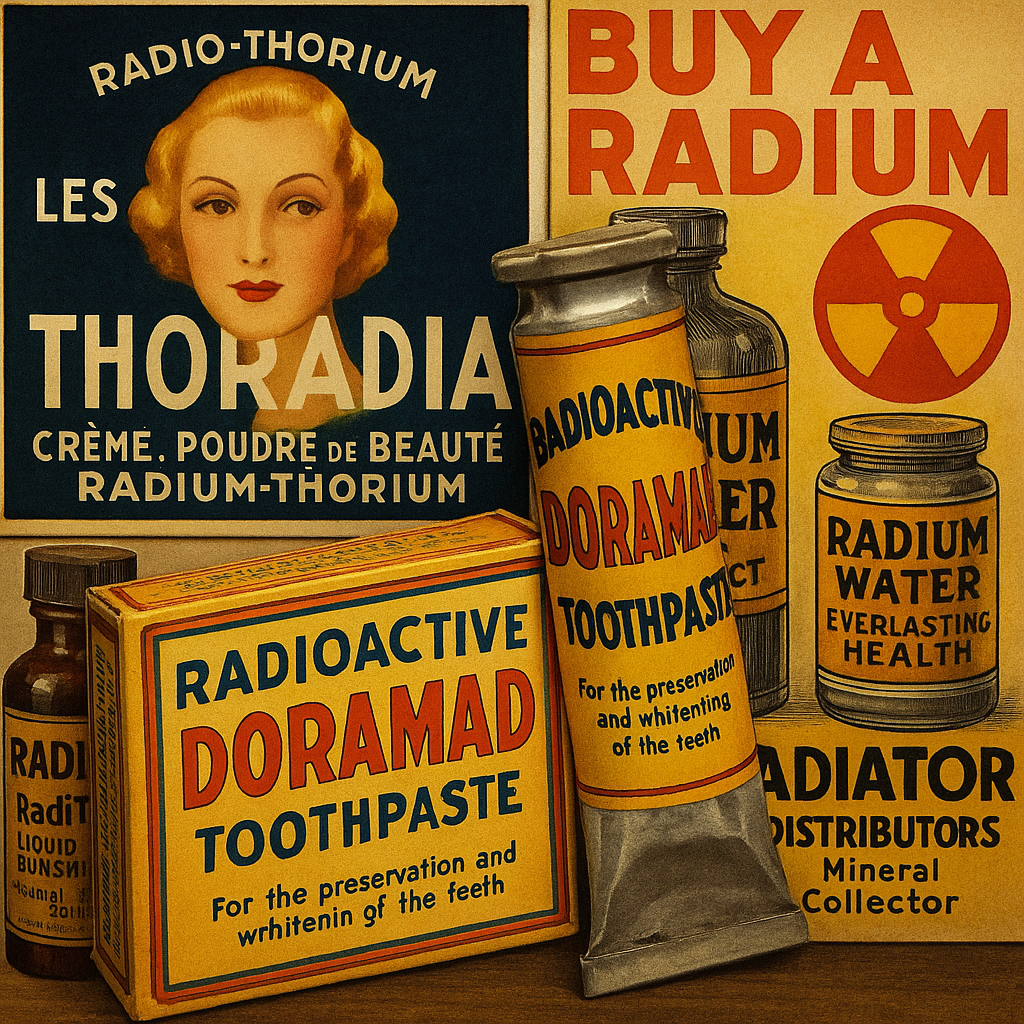The Rise of Radioactive Toothpaste
In the 1920s and 1930s, radioactivity wasn’t feared — it was fashionable. Companies jumped at the chance to sell “health” through radiation, from spa waters to cosmetics. Germany’s Doramad toothpaste, produced by Auergesellschaft, was among the most infamous. Its ads boasted that radioactive rays would invigorate gums and stop bacteria in their tracks. Another brand, Tho-Radia, sold radium-infused creams and powders as luxury beauty products.
For consumers, brushing with radioactive dental products sounded cutting-edge. The idea of harnessing “modern science” was irresistible. But behind the glow lay a hazard nobody truly understood.
Key Takeaway: Radioactive toothpaste thrived on the excitement of new science, even when that science was dangerously misunderstood.
Why People Believed It Worked
To understand the craze, remember: this was a time when radiation therapy was being tested in hospitals and radium was literally painted on watches to make them glow. Marketing for radium toothpaste claimed it boosted energy, strengthened enamel, and gave gums vitality. Testimonials and pseudo-science filled advertisements, while warnings from skeptical doctors were often drowned out by bold promises.
Consumers, dazzled by the prospect of radiant health, brushed away without a second thought. The idea that something invisible and powerful was “working” inside your mouth was more magical than medical.
The Hidden Dangers of Doramad Toothpaste
Unfortunately, the “miracle” inside those tubes was thorium and other radioactive compounds. The problem: radiation damages tissues at the cellular level. Over time, exposure to radioactive materials can lead to anemia, bone damage, and cancers.
Factory workers likely bore the greatest risks. Just as the infamous Radium Girls suffered horrific effects from painting luminous watch dials, those making and handling radioactive toothpaste were exposed daily. Even casual users, though receiving smaller doses, were essentially brushing radioactive dust into their mouths.
Key Takeaway: Doramad toothpaste wasn’t just ineffective — it was actively harmful. Radiation exposure never belonged in daily hygiene.
The Fall of Radioactive Dental Products
By the 1940s and 50s, as evidence of radiation sickness mounted, enthusiasm for radioactive consumer products waned. Governments introduced tighter regulations, and companies quietly discontinued their radioactive pastes and powders. By mid-century, radioactive toothpaste was relegated to medical oddities museums, where vintage Doramad tubes are still displayed as cautionary relics (see an example at ORAU’s museum).
What We Can Learn Today
The history of radioactive toothpaste is more than a curiosity. It’s a reminder that bold claims and flashy science aren’t always safe. Back then, “radiation” sounded like progress. Today, the buzzwords may be “all-natural,” “detox,” or “miracle whitening.” The lesson? Always look beyond the marketing and ask: where’s the science?
Thankfully, we now have safe, regulated oral care products — and a wide range of natural options. Coconut oil, baking soda, and fluoride-free pastes provide cleaner, greener ways to brush without risking a radioactive smile. And unlike the Doramad era, agencies like the U.S. Food and Drug Administration were created to ensure safety is tested before products reach consumers.
Key Takeaway: The radioactive toothpaste fad shows how easily trends can mislead. Informed, critical choices are the best way to protect your smile.
Conclusion
From Doramad’s glowing promises to the grim reality of radiation exposure, radioactive toothpaste belongs firmly in the “what were they thinking?” file of Weird Dental Facts. While it may be entertaining to look back on these oddities, the real value lies in remembering that health trends should be guided by evidence, not hype. So next time you squeeze a tube of modern toothpaste, be glad it doesn’t glow in the dark — and that it won’t leave you glowing either.






